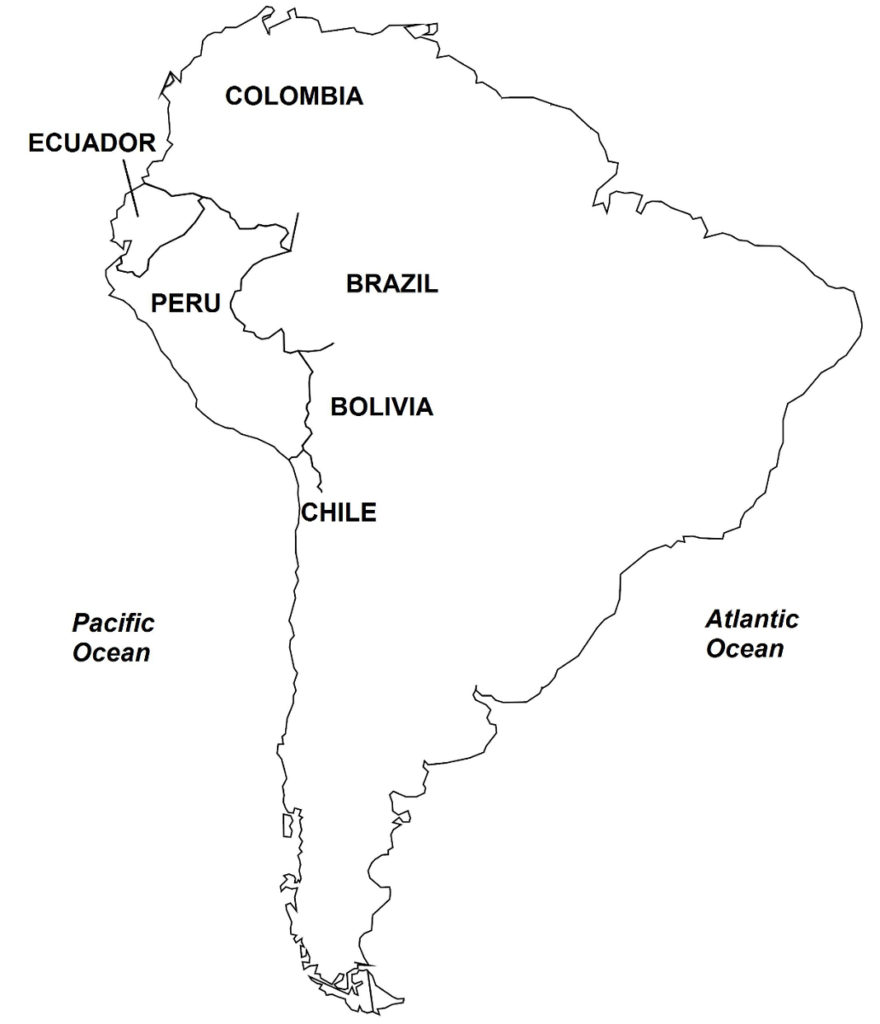By early January 1995, the strong Peruvian presence was being felt with an increase in military activities near the Ecuadorian forward outposts. Ecuadorian and Peruvian patrols encountered each other on January 9 and January 11, with the latter encounter leading to an exchange of gunfire. Then on January 21, Peruvian troops were landed by helicopter behind the Ecuadorian outposts in preparation for a Peruvian full offensive. The infiltration was discovered when an Ecuadorian patrol spotted some 20 Peruvian soldiers setting up a heliport. Ecuadorian Special Forces were called in; after a two days’ trek through the jungle, the Ecuadorians located the Peruvian camp. In the ensuing firefight, the Ecuadorians dispersed the Peruvians. A number of Peruvians were killed, while the abandoned weapons and supplies in the camp were seized.
Both countries mobilized for war, massing their main forces along the border near the Pacific coast. The war was confined to the Condor-Cenepa region, however, where the Peruvians launched many offensives aimed at destroying the Ecuadorian positions located at the eastern slope of the Condor. On January 28, Peruvian ground forces, later backed by air cover, launched successive attempts on the Ecuadorian outposts. The ground attacks involved an uphill climb against well-entrenched positions. More attacks were carried out the next day and into early February, with the Peruvians attempting to outflank the outposts but being met by strong resistance. On February 1, a Peruvian advance on Cuevas de los Tayos fell into a minefield, causing several casualties.

(Taken from Cenepa War – Wars of the 20th Century – Volume 2)
Background The 1981 Paquisha War (previous article) between Ecuador and Peru left unsettled the border dispute regarding sovereignty over the Condor Mountain range and the Cenepa River system located inside the Amazon rainforest. Peruvian forces achieved a tactical victory by destroying three Ecuadorian forward outposts and re-established control over the whole eastern side of the Condor range, although the Ecuadorian government continued to claim ownership over the whole Condor-Cenepa region. In the years following the Paquisha War, the two sides strengthened their areas of control in the region, with the Ecuadorians occupying the peaks and western slope of the Condor range, and the Peruvians at the Condor’s eastern slope and Cenepa Valley. Because of the thick forest cover, Ecuadorian and Peruvian patrols often accidentally encountered each other, which at the very worst, led to exchanges of gunfire, but generally ended without incident, as the two sides had agreed to abide by the Cartillas de Seguridad y Confianza (Guidelines for Security and Trust), which lay down the rules to prevent unnecessary bloodshed.
In November 1994, a Peruvian army patrol came upon an enemy outpost and was told by the Ecuadorian commander there that the location was situated inside the Ecuadorian Army’s area of control. The Peruvian Army soon learned that the outpost, which the Ecuadorians named “Base Sur”, was located on the eastern slope of the Condor, and therefore in the area traditionally under Peruvian control. Thereafter, the Ecuadorian and Peruvian local commanders met a number of times to try and work out a resolution, but nothing came out of the meetings.
With tensions rising by December 1994, Ecuador and Peru began sending reinforcements and large quantities of weapons and military equipment to the disputed zone, a difficult and hazardous operation (particularly for Peru’s Armed Forces because of the greater distance) which required air transports because of the absence of roads leading to the Condor region.
Apart from “Base Sur”, the Ecuadorians had set up a number of other outposts, including “Tiwintza” and “Cueva de los Tayos”, and the larger “Coangos”, near the top of the Condor Mountain. The camps’ defenses were strengthened by new minefields laid out at the approaches, and the installation of anti-aircraft batteries and multiple-rocket launchers; a further boost was provided by the arrival of Ecuadorian Special Forces and specialized teams equipped with hand-held surface-to-air missile launchers to be used against Peruvian planes.
By early January 1995, the strong Peruvian presence was being felt with an increase in military activities near the Ecuadorian forward outposts. Ecuadorian and Peruvian patrols encountered each other on January 9 and January 11, with the latter encounter leading to an exchange of gunfire. Then on January 21, Peruvian troops were landed by helicopter behind the Ecuadorian outposts in preparation for a Peruvian full offensive. The infiltration was discovered when an Ecuadorian patrol spotted some 20 Peruvian soldiers setting up a heliport. Ecuadorian Special Forces were called in; after a two days’ trek through the jungle, the Ecuadorians located the Peruvian camp. In the ensuing firefight, the Ecuadorians dispersed the Peruvians. A number of Peruvians were killed, while the abandoned weapons and supplies in the camp were seized.
